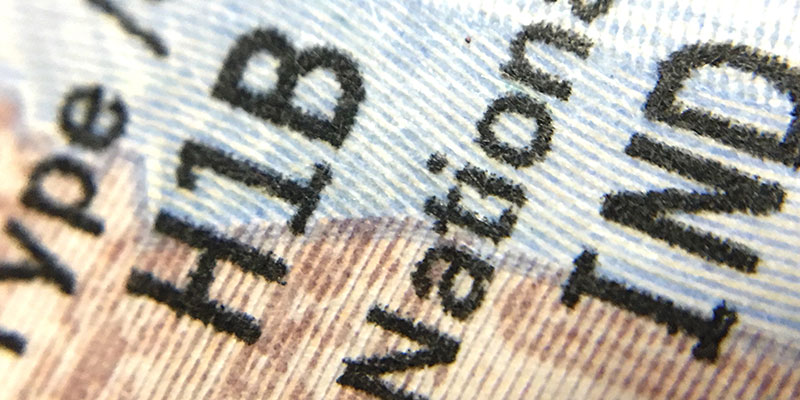
You will find the following topics in this blog:
One of the biggest advantages of an H1B visa is that it allows be employed under several employers as long as the additional employer is willing to file the H1B petition. This is called the Concurrent H1B. This visa seeks authorization for any H1B holder with valid visa status, allowing them to be employed in a H1B concurrent employment with their current H1B job.
Like the original H1B visa, the Concurrent H1B must also be filed by the employer on behalf of the H1B employee, allowing them to work for more than one employee simultaneously. The new employer must file the petition with the USCIS seeking permission for the H1B employee to work in two or more jobs.
How many Concurrent H1Bs are permitted?
Generally, there is no limitation to how many Concurrent H1Bs you can have simultaneously. You can also hold different jobs in various fields across various industry sectors. Multiple jobs in a specialty occupation do not have to be in the same occupational category or similar to your first job. However, there is one contingent: You must indicate that you are maintaining a valid H1B status and that you are not overworking.
What are the allowed and prohibited jobs under the 2nd concurrent H-1B visa?
As long as you meet the educational criteria, you can get two concurrent H-1B visas in different fields. If you are already working full-time for one employer and wish to continue to do so for a second employer, you may be denied a concurrent visa status.
While on a 2nd concurrent H-1B visa, you may not:
The Concurrent H1B requirements are similar to those of a regular H1B petition. As the H1B holder, you must have:
On the other hand, your employer must also demonstrate that:
The Concurrent H1B may be new to you. To help you understand this better, here are the important aspects of Concurrent H1B.
Now that you know the requirements and the important aspects of Concurrent H1B let's move on to the application process.
Also Read: Concurrent h1b FAQs
Filing a Concurrent H1B and filing an H1B visa are quite similar. Given below are the steps to be followed by the employees and employers in applying for a concurrent H1B visa.
Step 1: Employers must file the Labor Certification Application with the Department of Labor and demonstrate that the job requires special knowledge.
Step 2: Employers must show proof of the employee's bachelor's or master's degree, pay the required fee and maintain an employer-employee relationship.
Step 3: The employee can take up full-time or part-time jobs for a single or multiple employers as long as each job position qualifies as an H1B specialty occupation.
Step 4: An employee on whose behalf concurrent H1B has been petitioned can commence working for his/her new employer promptly after the H1B petition is filed
with the USCIS. ( Please remember that H1B Transfer rules are applicable if the employee does not require approval before working. Employees must obtain an H1B stamping for the second job when the H1B petition is approved.)
Step 5: Employers must notify the USCIS about the Concurrent H1B petition.
Step 6: Employees can then proceed to their work location after acquiring the USCIS receipt and approval. They must ensure their H1B status allows them to come back to the country based on its validity.
Important Pointers to File a Concurrent H1B
To understand these aspects better, let's assume that your current employer is Company A and your new employer is Company B.
Order and Timing for Filing the Concurrent H-1B
According to the USCIS rules, you cannot file for Concurrent H1B during the H1B Lottery. You need to go through the H1B quota at least once if you're applying through lottery. You can file for Concurrent H1B when:
Details of Concurrent H1B visa stamping
Concurrent H1B does not require a second stamp. However, you should note that you are employed full-time on DS 160. Having one valid H1-B visa stamp on your passport is sufficient for re-entering the United States if you travel out of the country.
You should also have the following papers as proof:
Transfer and Extension of Concurrent H-1B Job
To retain your H1B validity or Concurrent H1B position, you must notify the USCIS of any changes in your H1B employment, such as Extension or Transfer. In your application, you must also specifically mention if the changes occur because of layoff in your H1B main job or due to Cap Exempt. In this situation, you can retain your H1B status and continue being employed under your H1B concurrent employer.
Concurrent H1B Fee
The concurrent H1B cost is the same as the fee for filing a standard H1B application. Premium Processing is also available for filing Concurrent H1B.
If you want to make the most of your H1B visa validity, you can find work with more than one employer as long as the new additional employer is willing to file the petition on your behalf. Please remember that the USCIS won't merely approve your Concurrent H1B petition because your original H1B petition is already approved. You must be well-prepared with the documents and other requirements to acquire your Concurrent H1B.
For more details and information on H1B or other US non-immigrant visas, visit/follow TechFetch H1B.
**Disclaimer: All immigration policies and procedures are subject to change. Please refer to the official USCIS website for the latest updates.